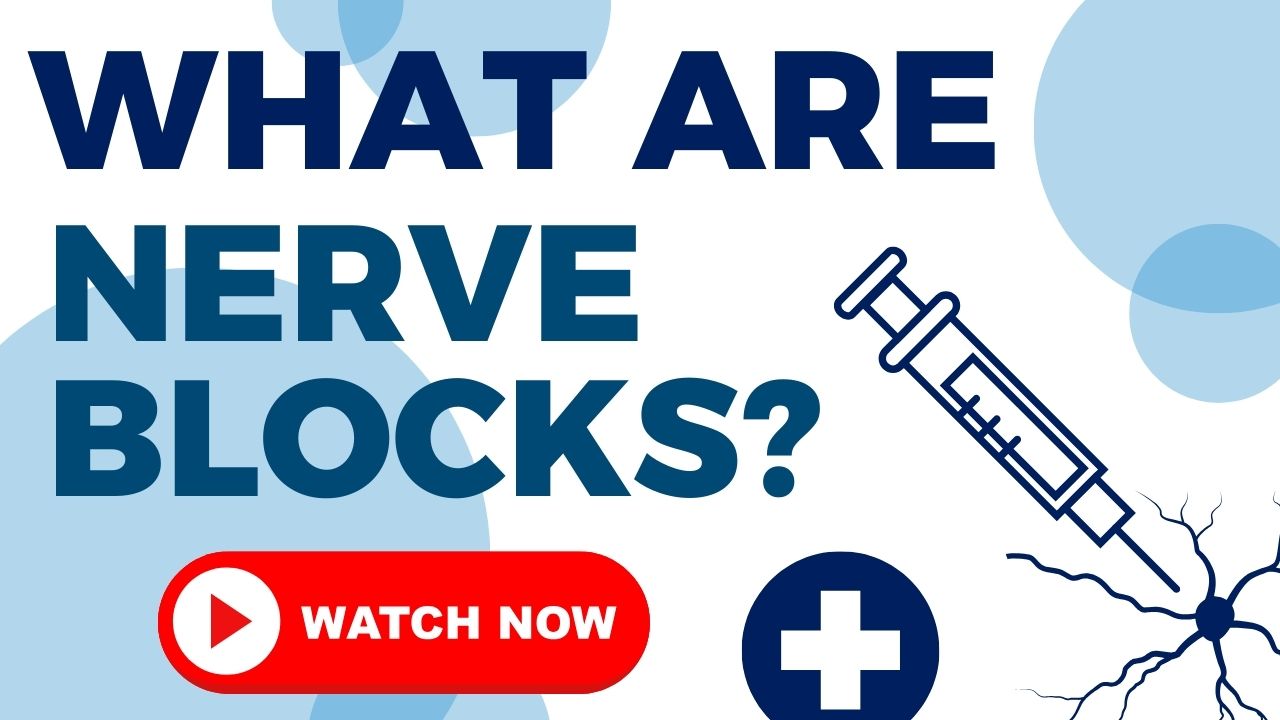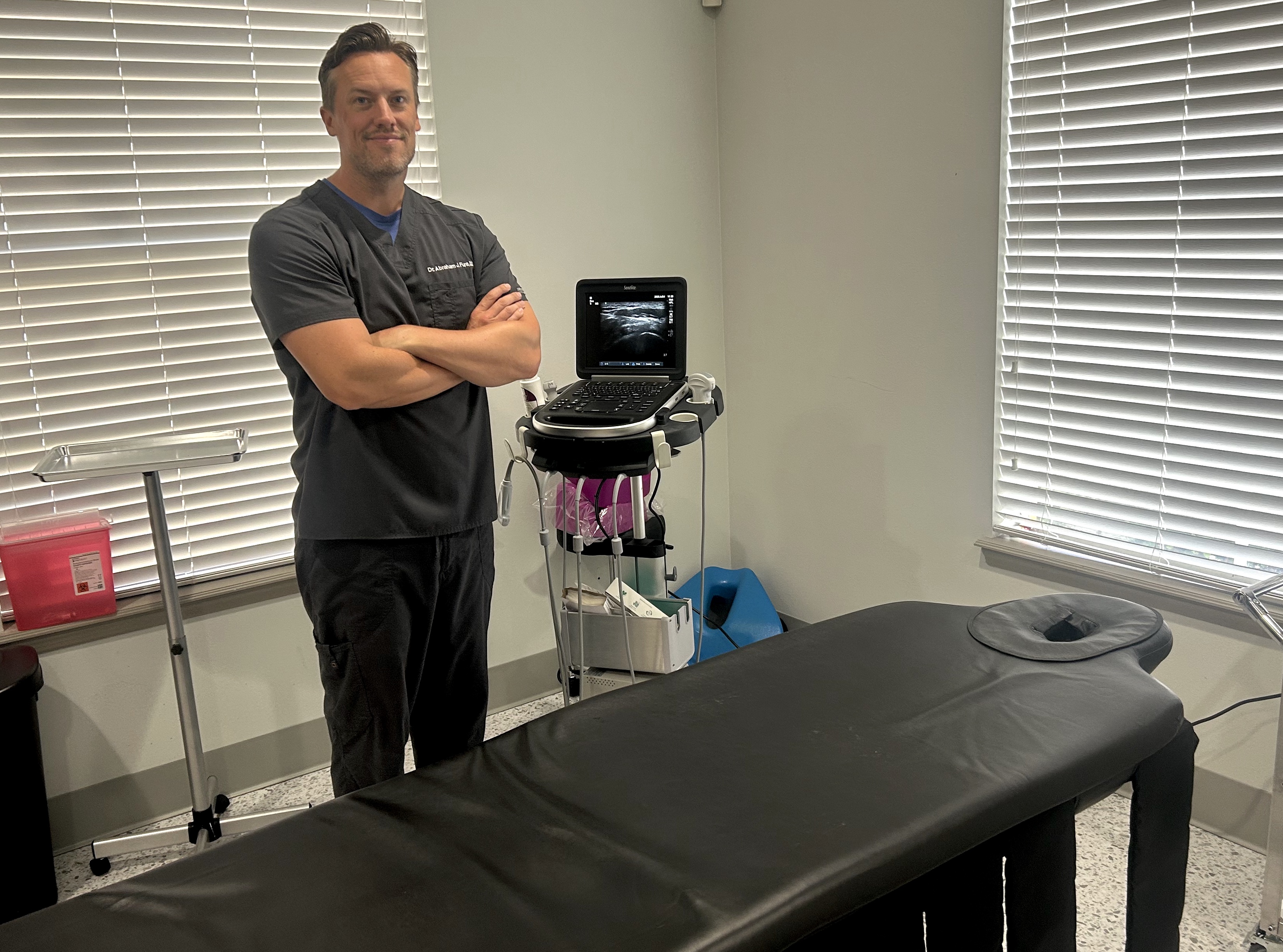
TREATMENT OVERVIEW
A Nerve Block is a versatile, minimally invasive procedure that involves injecting medication near a specific nerve or group of nerves to interrupt pain signals. These injections serve a dual purpose: they can be diagnostic, helping to pinpoint the exact source of your pain, and therapeutic, providing significant, targeted pain relief for a wide range of conditions.


PROCEDURE DETAILS
A nerve block procedure begins with positioning you comfortably to allow access to the target nerve. The injection site is then thoroughly cleaned, and a local anesthetic is used to numb your skin, ensuring the process is as comfortable as possible.
To guarantee precision and safety, your physician will use advanced imaging, such as fluoroscopy (X-ray) or ultrasound, to guide a very thin needle to the exact location of the targeted nerve or nerve cluster. This real-time visualization is crucial for an effective and safe block.
Once the needle is correctly positioned, the medication—typically a local anesthetic like lidocaine—is injected. For longer-lasting relief, a corticosteroid may be included to reduce inflammation. The anesthetic immediately blocks pain signals, providing rapid feedback and relief. The entire procedure is quick and performed in our office.
TREATMENT ADVANTAGES
Nerve blocks are a cornerstone of modern pain management, offering a powerful, minimally invasive approach to both diagnosing and treating chronic pain conditions.
If the injection provides significant pain relief, it confirms the targeted nerve is the source of the problem, leading to a more accurate diagnosis and treatment plan.
The local anesthetic provides immediate relief by interrupting pain signals, offering a welcome respite from chronic pain and confirming the injection's accuracy.
By effectively managing pain, nerve blocks can help many patients delay or completely avoid the need for more invasive surgical interventions.
The "window of relief" provided by a nerve block can allow you to more effectively participate in physical therapy to strengthen muscles and improve mobility.
A successful nerve block can predict how well you might respond to longer-lasting treatments, such as radiofrequency ablation (nerve burning).
As a quick outpatient procedure, nerve blocks have minimal downtime and a lower risk of complications compared to surgery.
IMPORTANT INFORMATION
Nerve block injections are generally very safe when performed by an experienced specialist using image guidance. However, like any procedure involving a needle, there are potential risks and side effects, most of which are temporary and minor.
Important: A thorough discussion of your medical history and current medications with your doctor is the most critical step in minimizing risks and ensuring a safe procedure.
PREPARATION GUIDE
Proper preparation is key to a successful and smooth procedure. Please review the following important steps to ensure you are ready for your appointment.
Ensure you have a thorough review with Dr. Fura. Disclose all allergies, especially to medications like contrast dye.
Stop blood thinners and other specific medications as instructed by Dr. Fura before your procedure.
Do not eat or drink after midnight. You must arrange for a responsible adult to drive you home afterward.
Wear comfortable, loose clothing. Avoid jewelry and leave valuables at home for safekeeping.
RECOVERY GUIDE
Your actions after the procedure are important for your recovery and for evaluating the injection's effectiveness. Please follow these guidelines closely.
Rest and avoid strenuous activity. Do not drive. It's crucial to keep a pain diary to track the level and duration of your pain relief while the initial anesthetic is active.
The numbing medication will wear off, and your original pain may temporarily return. You can resume light activities as you feel comfortable. Apply ice to the injection site if it is sore.
If a steroid was included in your injection, its anti-inflammatory effects will begin to work, providing more sustained pain relief. Continue to monitor your symptoms.
Your follow-up appointment is vital. You will discuss your pain diary and the results of the block to determine the most effective next steps for your long-term treatment plan.
Please don't hesitate to reach out and request an appointment. We look forward to meeting with you, addressing your concerns, and working together to enhance your quality of life.